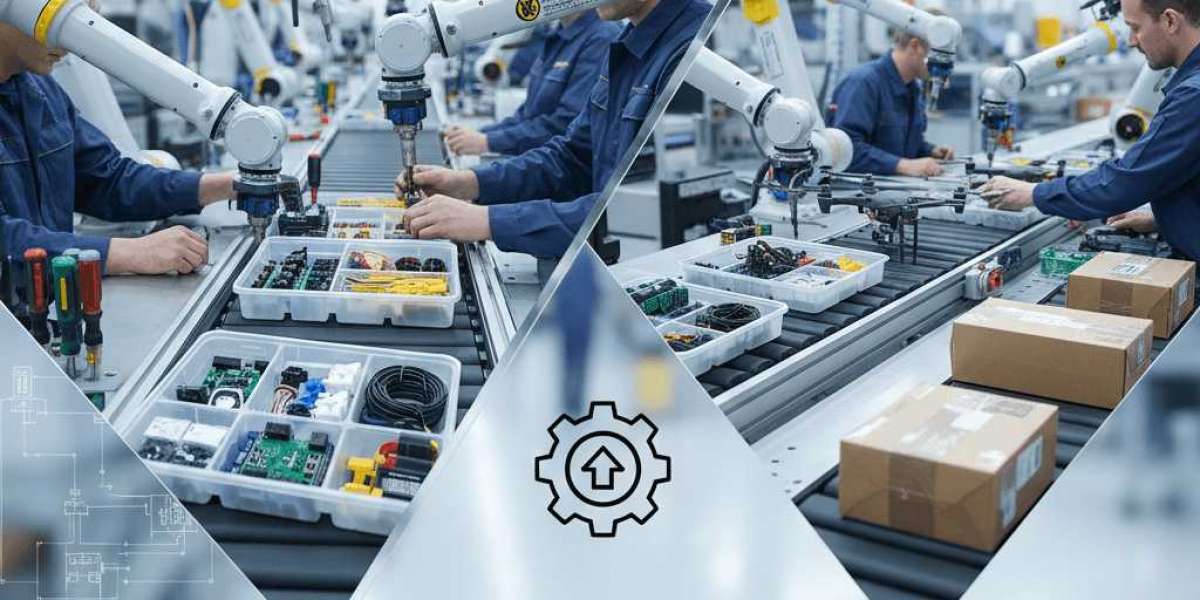In the fast-paced world of online retail, E-Commerce Fulfillment can make or break a business. Customers today expect fast, accurate, and reliable deliveries, and any inefficiency in the fulfillment process can lead to lost sales, increased returns, and diminished brand trust. Streamlining e-commerce fulfillment is no longer optional—it’s a necessity for businesses that aim to scale and compete effectively.
Understanding the Core of E-Commerce Fulfillment
E-commerce fulfillment refers to the entire process of receiving, processing, and delivering orders to customers. It involves multiple components: inventory management, order processing, packaging, shipping, and returns handling. Each of these stages must be carefully coordinated to ensure efficiency, minimize errors, and reduce costs.
Optimizing Inventory Management
Inventory is the backbone of e-commerce fulfillment. Poor inventory management leads to stockouts, overstocks, and delays, which directly impact customer satisfaction.
Use real-time inventory tracking: Automated systems help track stock levels accurately and prevent overselling.
Implement demand forecasting: Analyze historical sales data and seasonal trends to maintain optimal stock levels.
Centralize inventory: Consolidating stock in strategically located warehouses can reduce shipping times and costs.
Efficient Order Processing
Order processing is the critical link between customer purchase and delivery. Delays or errors at this stage can create a ripple effect throughout the fulfillment process.
Automate workflows: Integrating your e-commerce platform with fulfillment software reduces manual entry errors and speeds up processing.
Prioritize orders: Implement rules to handle high-priority or time-sensitive orders first.
Quality checks: Even with automation, a final verification ensures accuracy before shipping.
Streamlined Picking and Packing
Picking and packing are time-intensive stages that greatly influence fulfillment speed. Efficiency here can drastically reduce labor costs and errors.
Organize your warehouse: Use zone or batch picking methods to minimize movement and save time.
Standardize packing processes: Create packing protocols and kits to simplify packaging and ensure consistency.
Invest in packaging technology: Automated packing machines can speed up repetitive tasks and improve efficiency.
Leveraging Technology for Faster Shipping
Shipping is the most visible part of e-commerce fulfillment for customers. Delays here can lead to complaints, negative reviews, and lost loyalty.
Multi-carrier strategy: Partner with multiple shipping providers to reduce dependency and mitigate risks of delays.
Shipping automation: Use software to automatically select the best carrier and service based on cost, speed, and destination.
Real-time tracking: Providing customers with accurate tracking updates reduces inquiries and improves satisfaction.
Returns Management and Reverse Logistics
Returns are an inevitable part of e-commerce. Inefficient handling can increase costs and frustrate customers.
Simplify the returns process: Offer easy-to-follow instructions and prepaid return labels.
Automate reverse logistics: Track returned items and restock inventory quickly to minimize loss.
Analyze returns data: Identify patterns to improve product descriptions, reduce defective items, and prevent future returns.
Enhancing Customer Communication
Clear communication is key to a smooth fulfillment process. Customers who are informed about their order status are more likely to remain satisfied, even if delays occur.
Automated notifications: Send updates at key stages—order confirmation, shipping, and delivery.
Self-service portals: Allow customers to track orders, manage returns, and contact support efficiently.
Feedback loops: Collect customer feedback to identify fulfillment pain points and improve processes.
Scalability and Flexibility
E-commerce businesses must design fulfillment processes with growth in mind. Inefficient systems can collapse under increasing order volumes.
Flexible warehouse design: Ensure layout can adapt to new product lines or increased stock.
Scalable technology: Choose software solutions that grow with your business, supporting multiple channels and locations.
Outsource when necessary: Partnering with third-party fulfillment providers can handle spikes in demand without permanent overheads.
Continuous Improvement through Metrics
To maintain maximum efficiency, businesses must track key performance indicators (KPIs) and make data-driven decisions.
Order accuracy rate: Measures the percentage of orders shipped correctly.
Order fulfillment time: Tracks the time from order placement to delivery.
Return rate: Helps identify issues with products, packaging, or shipping.
Customer satisfaction: Monitors how fulfillment impacts the overall shopping experience.
Conclusion
Streamlining E-Commerce Fulfillment is essential for businesses aiming to provide faster delivery, reduce costs, and enhance customer satisfaction. From optimizing inventory and automating order processing to leveraging technology, managing returns efficiently, and maintaining transparent communication, every step in the fulfillment chain contributes to operational excellence.
Businesses that invest in modern tools, adopt best practices, and continually analyze performance metrics can achieve maximum efficiency, ensuring they stay competitive in today’s demanding e-commerce landscape. Efficient fulfillment isn’t just about speed—it’s about reliability, accuracy, and creating a seamless experience that keeps customers coming back.













